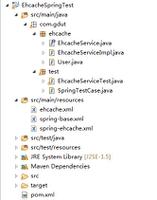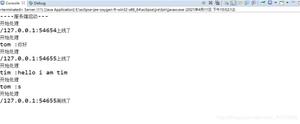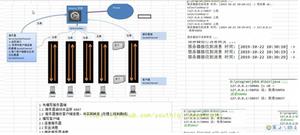Java实现图案打印: 记法与解释器

摘要: 通过引入一套简洁的记法和相应的解释器, 提高了打印图案的重用性。
难度: 初级
童鞋们应该对“打印星形图案”的编程题记忆犹新吧? 那就像我们的编程童年一样的美好。 打印边长为 n 个菱形, HO, 有的人立马就刷刷刷写出来了:
package patterns.interpretation;public class FigurePrinting {
/**
* 根据给定 n 值打印菱形图案
* @param n 菱形的边数
*/
public void printDiamond(int n)
{
if (n < 2) {
throw new IllegalArgumentException("参数 n = " + n + " 错误, 给定参数必须不小于 2!");
}
int midRow = n-1;
for (int row = 0; row <= midRow; row++) {
printLine(new int[] { midRow-row , midRow+row}, 2*n-1, '*');
}
for (int row = midRow+1; row < 2*n-1; row++) { // 对称性: row = midRow+i 与 row = midRow-i 的图案是一样的
printLine(new int[] { row - midRow, midRow + (2*midRow - row)}, 2*n-1, '*');
}
}
/**
* printLine: 在指定的若干位置上,打印符号; 不打印符号的位置打印空格
* @param indexes 指定要打印符号 symbol 的位置数组
* @param n 一行总共要打印的字符数
* @param symbol 要打印出的符号
*/
public void printLine(int[] indexes, int n, char symbol)
{
if (indexes == null || indexes.length == 0) { // 如果位置数组为空,则直接换行
System.out.println();
return ;
}
if (n < indexes.length) {
throw new IllegalArgumentException("要打印的符号数超过一行的总字符数!");
}
int k = 0;
for (int i=0; i < n; i++)
{
if (i != indexes[k]) {
System.out.printf("%c", ' ');
}
else {
System.out.printf("%c", symbol);
k++;
if (k == indexes.length) {
for (i = indexes[k-1]; i < n; i++) {
System.out.printf("%c", ' ');
}
}
}
}
System.out.println();
}
}
package patterns.interpretation;public class FigurePrintingTester {
private static FigurePrinting fp = new FigurePrinting();
public static void testPrintLine()
{
fp.printLine(null, 3, '*');
fp.printLine(new int[0], 3, '*');
fp.printLine(new int[] {}, 3, '*');
fp.printLine(new int[3] , 3, '*');
fp.printLine(new int[] {2,3}, 3, '*');
fp.printLine(new int[] { 0, 1, 2 }, 3, '*');
}
public static void testPrintDiamond()
{
for (int k = 1; k < 5; k++) {
try {
System.out.printf("边长为 %d 的菱形: \n", k);
fp.printDiamond(k);
}
catch (Exception e) {
System.out.println(e.getMessage());
}
}
}
public static void main(String[] args)
{
testPrintLine();
testPrintDiamond();
}
}
不过, 上述方式确有一些不足:
1. 对需要打印的位置要有精细的控制, 稍一不小心就容易出错; 2. 几乎没有多少可重用性。 一旦要打印更复杂或无规则图形,则要重新设计控制结构。
那么,有没有其它的解决方案呢?
有的, 这里,我们引入记法和解释器。 所谓记法, 就是对要打印图案的位置信息的记录或者指令; 而解释器,则对这种记录或指令进行解析。 比如: 打印符号 H
X X
X X X
X X
可以记做: 1Line 1X 3Blank 1X \n 1Line 1X 1Blank 1X 1Blank 1X \n 1Line 1X 3Blank 1X, 或者简记为: 1l 1x 3b 1x \n 1l1x1b1x1b1x \n 1l 1x 3b 1x \n. 类似于行程长度编码。 看上去, 这样的记法似乎有点繁琐, 但是,它的灵活性是非常高的, 几乎对于任意图形, 都可以写出这样的记法, 而对于 1x 1b 1x 1b ... 这样的常用记法, 可以通过编写常用例程生成。
这样, 我们所需要的中心任务, 就转化为确定记法的规则及相应的解释器。
通过对各种图案的归纳, 可以归纳出描述一行图案的记法的几个规则:
1. 记法中可以含三种组成成分: (a) [合法数值] [l 或 L] , (b) [合法数值] [b 或 B ] , (c) [合法数值] [X 或 x] ; 三种组成成分用多个空格符隔开;
2. 如果记法中不存在行标记 l 或 L , 则视为 一行 的简记; 记法中若仅含 l 或 L, 则视为一个或多个空行;
3. (a) 总是出现在最前面; 接下来 , (b) 或 (c) 可以任意组合出现或者不出现。
相应的正则表达式描述是:
[零个或多个空格符] ([合法数值] [lL]) ? [零个或多个空格符] ( [零个或多个([合法数值][BbXx][零个或多个空格]) 的组合) [零个或多个空格].
其中, 合法数值是不带前导零的数值, 即: [1-9] | [1-9][0-9]+
实现代码如下:
package patterns.interpretation;import java.util.Scanner;
import java.util.regex.Matcher;
import java.util.regex.Pattern;
public class Interpreter {
private static final String PART1_REGEX = "(([1-9]|[1-9][0-9]+)[lL])?";
private static final String PART2_REGEX = "((([1-9]|[1-9][0-9]+)[BbXx]\\s*)*)";
private static final String LINE_PATTERN_REGEX = "\\s*" + PART1_REGEX + "\\s*" + PART2_REGEX + "\\s*";
private static final Pattern LINE_PATTERN = Pattern.compile(LINE_PATTERN_REGEX);
private static final Pattern PART_PATTERN = Pattern.compile("([1-9]|[1-9][0-9]+)([bBxX])");
/**
* interpretFigure: 解释给定图形标记,必须由 \n 或 \r 隔开的多个行标记
* @param figureNote
*/
public void interpretFigure(String figureNote)
{
System.out.println("要打印的图形为: ");
for (String lineNote: figureNote.split("\\s*[\r\n]\\s*")) {
interpretLine(lineNote, false);
}
}
/**
* 解释给定行的图形标记
* @param lineNote 给定行的图形标记
*/
public void interpretLine(String lineNote, boolean tipFlag)
{
if (tipFlag) {
System.out.println("行标记为: " + lineNote);
}
Matcher matcher = LINE_PATTERN.matcher(lineNote);
if (!matcher.matches()) {
throw new IllegalArgumentException("不合法的图形标记,请检查!");
}
int lineNum = 0;
if (matcher.group(1) == null) {
lineNum = 1;
}
else {
lineNum = Integer.parseInt(matcher.group(2));
}
String lineInfo = matcher.group(3);
for (int i = 0; i < lineNum; i++) {
printLine(lineInfo);
System.out.println();
}
}
/**
* 根据给定的行标记信息打印行
* @param lineInfo 行标记信息
*/
public void printLine(String lineInfo)
{
if (lineInfo == null || lineInfo.equals("")) {
return ;
}
String partNote = "";
Matcher matcher = PART_PATTERN.matcher("");
String flag = null;
int num = 0;
Scanner scanner = new Scanner(lineInfo);
while (scanner.hasNext(PART_PATTERN)) {
partNote = scanner.next();
matcher.reset(partNote);
if (matcher.matches()) {
num = Integer.parseInt(matcher.group(1));
flag = matcher.group(2);
if (flag.equals("x") || flag.equals("X")) {
printNChars('x', num);
}
else {
printNChars(' ', num);
}
}
}
}
/*
* 打印 n 个 由 ch 指定的符号
*/
private void printNChars(char ch, int n)
{
if (n <= 0 ) { return ; }
while (n-- > 0) {
System.out.printf("%c", ch);
}
}
}
package patterns.interpretation;public class InterpreterTester {
private static Interpreter ip = new Interpreter();
public static void main(String[] args)
{
testInterpretLine();
printDiamond();
printCharH();
printCharC();
}
public static void printDiamond()
{
String figureNote = "2b 1x 2b \n 1b 1x 1b 1x 1b \n 1x 3b 1x \n 1b 1x 1b 1x 1b \n 2b 1x 2b \n";
ip.interpretFigure(figureNote);
}
public static void printCharH()
{
String figureNote = "2l 1x 3b 1x \n 5x \n 2l 1x 3b 1x\n";
ip.interpretFigure(figureNote);
}
public static void printCharC()
{
String figureNote = "1b 5x \n 3l 1x \n 1b 5x \n";
ip.interpretFigure(figureNote);
}
public static void testInterpretLine()
{
String exString1 = "3l \n 3L \n 1l 4b \n 1l 3x \n 3l 2b 2x \n ";
String exString2 = "3l 5b 2x 3b\n 3l 5x 3b 5x \n";
String exString3 = "03l 23x 4b \n 3l 023x 43b \n 3l 23x 043b \n 5b \n 3x \n 5b 3x \n 3x 5b \n";
String totalString = exString1 + exString2 + exString3;
String[] multLines = totalString.split("\n");
for (String line: multLines) {
try {
ip.interpretLine(line, true);
}
catch (Exception e) {
System.out.println(e.getMessage());
}
}
}
}
总结:
通过引入一套简洁的记法和相应的解释器, 我们提高了打印图案的重用性。 对于任意要打印的图案, 只要遵循这种记法写出相应的指令, 就可以轻易地打印出期望的图案。 并且, 这种记法对于非技术性普通用户也是易于理解的。 这说明了, 记法与解释器, 确实一种另辟蹊径的求解方案。
以上是 Java实现图案打印: 记法与解释器 的全部内容, 来源链接: utcz.com/z/392643.html







